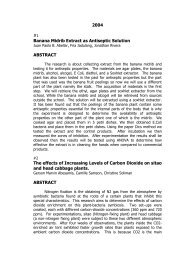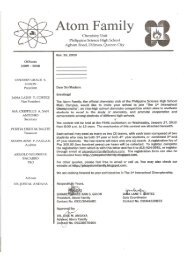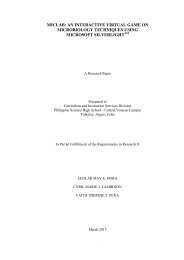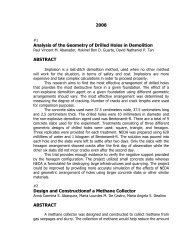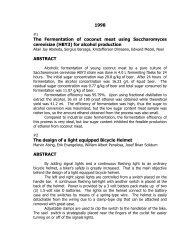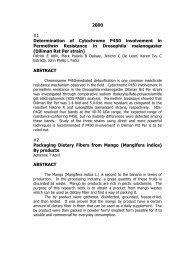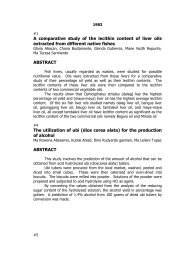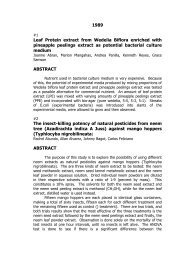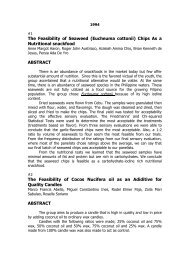(LATO) IN LOWERED SEAWATER pH - Central Visayas Campus ...
(LATO) IN LOWERED SEAWATER pH - Central Visayas Campus ...
(LATO) IN LOWERED SEAWATER pH - Central Visayas Campus ...
You also want an ePaper? Increase the reach of your titles
YUMPU automatically turns print PDFs into web optimized ePapers that Google loves.
2.3 Caulerpa lentillifera<br />
Kingdom: Plantae<br />
Division: Chlorophyta<br />
Class: Bryopsidophyceae<br />
Order: Bryopsidales<br />
Family: Caulerpaceae<br />
Genus: Caulerpa<br />
Species: lentillifera<br />
The genus Caulerpa are fast-growing green algae with fronds (“leaves”) that<br />
come in a variety of shapes. The fronds between 15-30 cm (6-12 inches) in length are<br />
attached to long runners (“stems”) called rhizomes. Besides simply spreading<br />
outwards, Caulerpa can also propagate themselves vegetatively through sections of<br />
rhizome that break off the parent plant and become established elsewhere ( Jenkins,<br />
2009).<br />
Caulerpa lentillifera is one of the favored species of edible Caulerpa due to its<br />
soft and succulent texture. It is also known as sea grapes, green caviar, "ar-arosep", or<br />
"lato" in the Philippines. The pond cultivation of C. lentillifera has been very<br />
successful on Mactan Island, Cebu, Philippines, with markets in Cebu and Manila.<br />
About 400 hectares (ha) of ponds are under cultivation, producing 12-15 tonnes of<br />
fresh seaweed per hectare per year (McGugh, 2003).<br />
C. lentillifera is usually eaten raw with vinegar, as a snack or in a salad<br />
(Jenkins, 2009). It was also found to be a potential source of plant food proteins<br />
owing to its high protein levels and balanced amino acid profiles and mineral<br />
supplements (Chirapart and Ratana-arporn, 2006). The study conducted by Chirapart<br />
8




